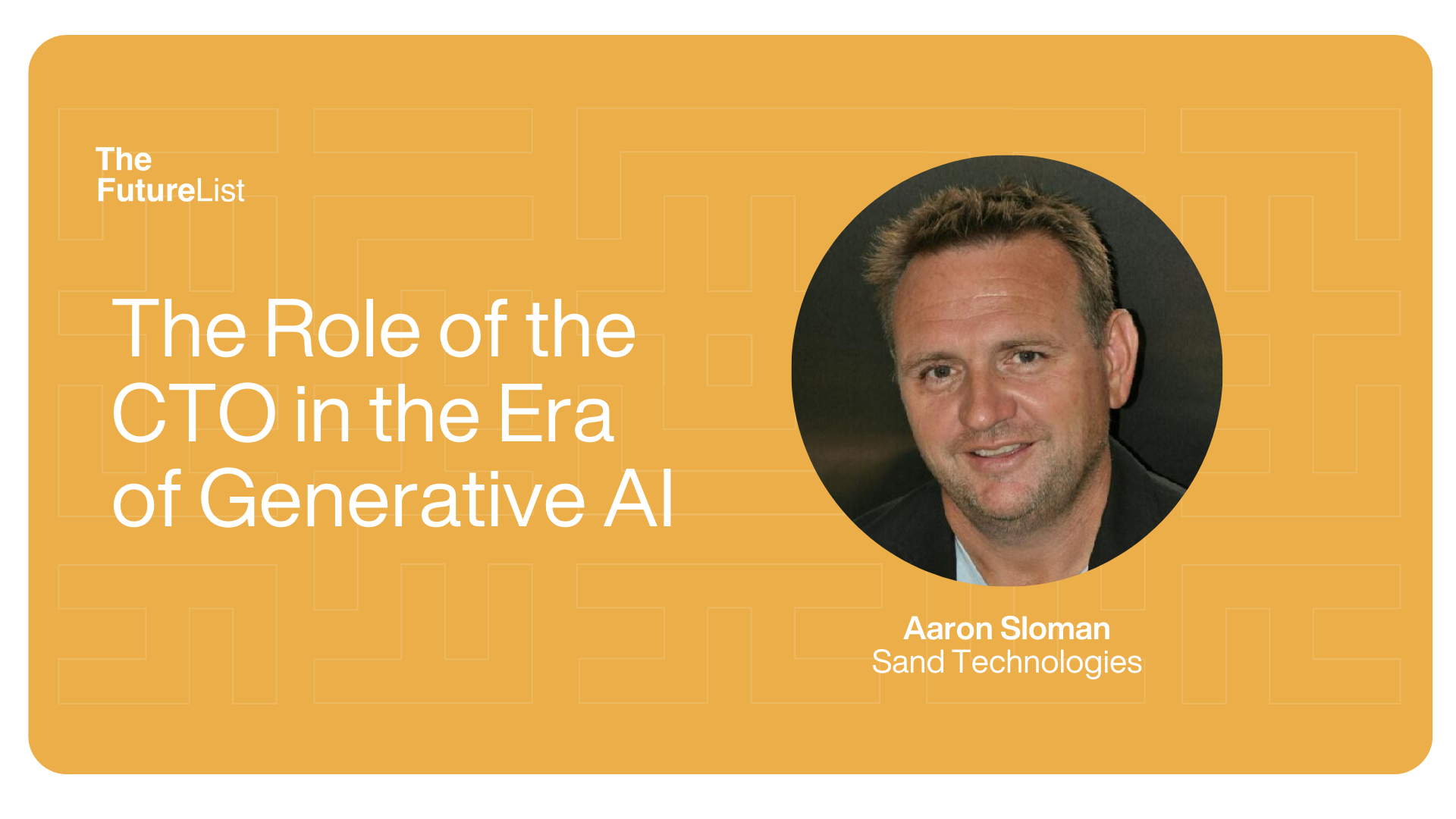
The Role of the CTO in the Era of Generative AI
As the era of generative AI continues to unfold, the role of the CTO has become more critical than ever. The CTO plays a crucial role in overseeing the development of generative AI systems within an organisation. This includes developing the technical strategy, selecting the right tools and technologies, hiring the right team, and ensuring that the system is built to meet the organisation’s needs.
To gain further insights on the topic of the role of the CTO in the era of generative AI, we sat down with Aaron Sloman, a CTO Advisor with Sand Technologies. Aaron has worked with dozens of the leading startups and technology companies over the past three decades and has gained extensive experience in this field.
The FutureList: What role does the CTO play in the development of generative AI?
Aaron: The CTO is responsible for overseeing the development of generative AI systems within an organisation. It is essential to develop a technical strategy that aligns with the company’s goals and values. Selecting the right tools and technologies is also critical to ensure that the system is reliable, scalable, and secure. CTOs must also hire the right team that has the necessary skills and expertise to develop and maintain the system.
The FutureList: How can CTOs ensure that generative AI is aligned with the organisation’s goals?
Aaron: To ensure that generative AI is aligned with the organisation’s goals, CTOs must work closely with other stakeholders across the company. This includes executives, product managers, and other members of the development team. It is essential to understand the organisation’s goals and work collaboratively to ensure that the generative AI system is designed to meet the organisation’s specific needs.
The FutureList: What are the biggest challenges that CTOs face when working with generative AI?
Aaron: One of the biggest challenges that CTOs face when working with generative AI is the constantly evolving nature of the technology. As new tools and techniques emerge, it’s essential for CTOs to stay up-to-date and ensure that the organisation is leveraging the latest advances. Staying up-to-date is important to ensure that the system is reliable, secure, and scalable.
CTOs must also ensure that the system is secure, reliable, and scalable. It is important to develop policies and guidelines for the system’s use, ensuring that data is collected and used responsibly, and monitoring the system for any potential ethical issues.
Data governance and management has become a particularly challenging arena. Generative AI models like GPT-4 learn from vast amounts of data. CTOs should be thinking about how to securely and responsibly collect, store, and manage this data. This includes understanding the privacy implications of the data they’re using, as well as considering how to clean and structure the data to make it usable for AI. In this context, CTOs also need to understand regulations around data use such as GDPR, HIPAA etc.
The FutureList: How can CTOs ensure that generative AI is used ethically?
Aaron: Ensuring that generative AI is used ethically is a critical responsibility for CTOs. By working closely with other stakeholders across the organisation, CTOs can ensure that generative AI is used in a way that aligns with the company’s values. Developing policies and guidelines for the system’s use, ensuring that data is collected and used responsibly, and monitoring the system for any potential ethical issues are important steps that CTOs can take to ensure that generative AI is used ethically.
The FutureList: What advice would you give to CTOs who are just starting to work with generative AI?
Aaron: For CTOs who are just starting to work with generative AI, it is important to start small and focus on a specific use case. By starting with a small project, CTOs can gain experience and build a foundation for future projects. It is important to work closely with other stakeholders across the organisation and stay up-to-date on the latest tools and techniques. CTOs must ensure that the system is designed with security, reliability, and scalability in mind.
Depending on the business needs, off-the-shelf models might not be the best fit. CTOs should therefore consider the process for training and customising AI models to fit their unique business context. This could include understanding the resources required for model training, as well as developing a strategy for regularly updating models with new data to improve their performance over time.
Need guidance on how to best enable your organisation to leverage generative AI? Get in touch with the team at Sand Technologies to see if you qualify for a complimentary AI needs assessment from one of their internal experts.
Categories
- Agritech
- Artificial Intelligence
- Biotech
- Blockchain
- Climate Tech
- Data Infrastructure
- Edtech
- Events
- Fashion
- Fintech
- Healthtech
- Infrastructure
- Innovation Memos
- Innovation Scout Program
- Insight
- Insurtech
- Machine Learning
- Martech
- Mobility
- Music and Media
- Partner Offers
- Perks
- Procurement
- Proptech
- Retailtech
- Ridehailing
- Ridesharing
- Robotics
- Space Aviation
- Supply Chain
- Talent
- Telecoms
- Uncategorized
- Venture Capital
- Wastetech
- Women In Tech
Recent Posts
- How AI Surveillance is Shaping Public Safety in Smart Cities
- Innovation Memo with Zencey: Bringing Equitable Healthcare to Africa
- Inside the Software Model Running Modern Harbours
- The Formula for Future Speed: Data-Driven Performance in Racing
- Leveraging Next-Gen Endoscopic Interventions and Innovations for Healthcare